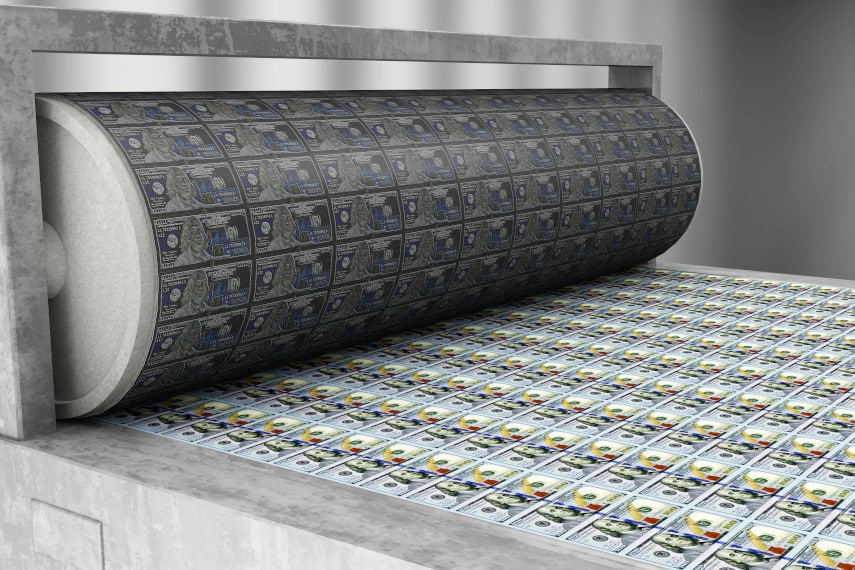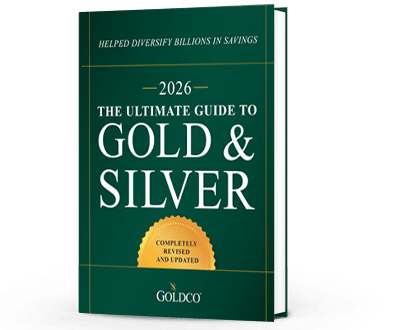6 Indicators of a Potential Recession
It seems that in the media today there are more and more mentions of the dreaded R-word: recession With growing economic uncertainty, the threat of potential recession seems to be growing as...
Economy

Inflation is a topic that’s on the tip of most people’s tongues, and at the forefront of their minds. Even if you’re a big saver and financially frugal, you can’t help but notice how prices are rising throughout the economy. And those price rises are starting to affect everyone.
The Federal Reserve and the Biden administration are still clinging to the idea that this inflation is transitory, and that upward pressure on prices will begin to abate by the end of the year. But an increasingly large body of evidence suggests that inflation will continue to rise this year and into next year. And perhaps more importantly, consumer expectations of inflation are continuing to rise.
While rising inflation can be devastating to consumers, especially those on the lower rungs of the economic ladder, investors aren’t unaffected either. Investing in a high-inflation environment is something that almost no active investors today remember, as it has been 40 years since the economy has experienced such inflation.
Investing in a high inflation environment could mean that millions of investors need to reassess their portfolios and rethink their strategies. A few months of inflation isn’t enough to warrant that, but if inflation persists for a year or two, or perhaps even longer, then rethinking your investment strategy might be a necessity.
Investors who are able to get ahead of the curve and protect their assets against inflation stand a better chance than those who remain flat-footed and fail to appreciate the threat from inflation. That will require keeping an eye on market activity and inflation trends. Here are four factors that could drive higher inflation in the future.
As Milton Friedman famously observed, inflation is always and everywhere a monetary phenomenon. The rising prices we’re seeing throughout the world today have one common cause: excessively loose central bank monetary policy.
The Federal Reserve has more than doubled the size of its balance sheet since last year, to over $8 trillion. That much money getting pushed into the economy in such a short amount of time has, not surprisingly, led to the current surge in prices. And the Fed is still purchasing Treasury debt and mortgage-backed securities to the tune of nearly $1.5 trillion per year.
While there is currently talk of the Fed tapering its asset purchases, the damage was already done in the initial surge last year, we’re just now seeing the effects of it. And those effects could very well last for a while, even if the Fed tapers its asset purchases. As long as the Fed keeps buying hundreds of billions of dollars of assets each year, don’t expect inflation to abate anytime soon.
Part of the reason the Fed increased its balance sheet so much was the fact that the federal government spent so much money in its attempt to counteract the effects of COVID lockdowns. Had the Fed not intervened, the massive amount of debt the federal government was issuing could have overwhelmed world debt markets.
Just imagine the effect trillions of dollars worth of newly issued debt would have had on world debt markets. Total debt held by the public has increased by 30% since last year, with much of that increase happening in a matter of months last year. That kind of increase, coming at a time when markets were weak and economies were in recession, couldn’t have been absorbed by markets, at least not at prevailing low interest rates.
The Fed’s move was a response to keep interest rates from spiking, to keep bond markets functioning normally, and to allow the federal government to keep operating. But the effect has been to boost inflation. If the Biden administration continues to spend trillions of dollars that it doesn’t have every year, and much of that new debt gets monetized, expect inflation to continue to rise.
The spread of new variants of COVID, such as the delta variant, is causing fear among health authorities and markets. Countries in Europe are introducing new lockdowns or requiring vaccine passports for people wishing to return to normal everyday life. And greater unease in the US about the spread of the delta variant is causing worry among state governments and health officials.
Wall Street is worried that we could face another round of lockdowns, something that would be incredibly destructive to the economy and that could suffocate any potential for a return to normal economic growth. If governments succumb to the panic and reintroduce lockdowns, don’t be surprised to see stock markets tank again just like they did in early 2020.
You also shouldn’t be surprised to see more panic buying and hoarding if that happens, which would drive prices for food and staple goods up even further. Governments have the ability to keep that from happening, by keeping level heads and not repeating the same mistakes they made a year ago. Will they be successful in doing that?
It seems as though much of the world is dealing with bouts of really bad weather. The Western United States has faced soaring heat, wildfires, and record droughts, imperiling agricultural production. Brazil recently faced record cold temperatures, decimating its coffee bean crop and sending coffee prices soaring. Floods in China are impacting pork production, itself already hampered by disease. Is there any aspect of agricultural production that isn’t being negatively affected by bad weather?
If that weren’t bad enough, supply chains remain completely discombobulated by the effects of lockdowns. Computer chips remain in short supply, impacting the automotive industry and numerous consumer products. Long waiting lists and higher prices are the result, and they could be around for a while.
We could be experiencing just the very beginning of some really severe price increases that could be with consumers for a long time to come. From meat to cars to refrigerators, don’t be surprised to see prices continue to climb for months or years, putting a significant crimp on consumers’ pocketbooks.
Rising inflation has consumers wondering how they can make their dollars go farther, as their standard of living will be decreasing as inflation continues to rise. But investors too are starting to look at how they can protect themselves, as rising inflation will take a bite out of their investment returns.
Investors are increasingly looking at traditional safe haven assets like gold and silver to help protect their assets against inflation. Gold and silver have a long track record and a long history of protecting against inflation, maintaining their purchasing power when paper currencies become increasingly devalued.
During the 1970s, for instance, gold and silver both grew at annualized rates of over 30% for the decade, while inflation peaked at 11%. That’s pretty impressive performance, certainly far better than stock markets, and shows how gold and silver can post impressive performance when the dollar loses value to inflation.
Many investors are confident that gold and silver will demonstrate similar performance over the next few years as inflation continues to rise. They trust in gold and silver to protect and defend the value of their hard-earned savings and investments.
If you want to learn more about how gold and silver can help safeguard your savings, contact the precious metals experts at Goldco today. Their years of experience helping tens of thousands of customers can help give you the edge you need to protect your assets.
Don’t let your retirement savings fall victim to rising inflation. Contact Goldco today and discover how you can put yourself on the road to financial stability and security with gold and silver.

